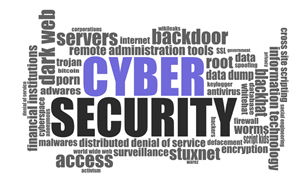THANK YOU FOR SUBSCRIBING

IT Security for medium-sized businesses and enterprises in Australia
Vlad Vyshnivetskyy, Head of Cyber Security at PICA Group


Vlad Vyshnivetskyy, Head of Cyber Security at PICA Group
Information Security (InfoSec, Cyber or IT Security) is a critical component of any business. Confidentiality, Integrity and Availability of IT assets are paramount in the modern digital and technology-centric world.
In Australia, medium-sized businesses and enterprises (20-400 employees) face the same typical IT security threats as larger corporations – big end of town. This article will look at the various aspects of IT security for such businesses. Thus let's start with...
Challenges
Despite being medium-sized, these businesses still mostly lack a dedicated IT staff or have limited IT and IT Security resources. Coupled with a limited budget, this reflects that lean businesses have a primary focus on business aspects to survive in their competitive areas. Respectively, IT and IT Security functions usually have less recognition and support from senior management as compared to the main business, resulting in the depreciation of respective IT Security risks and threats.

Slowly, business leaders start to realise how heavily their operations depend on IT and how severe could be the outcomes of IT Security risks. Therefore – let's look at the common…
Threats
Despite the challenges, the threat landscape for medium-sized businesses and enterprises in Australia remains the same as for large corporations – no discounts for size or smaller budgets and resources.
Daily business threats consist of malicious emails and phishing attacks, signalling the need for staff security awareness knowledge and practice of cyber security hygiene. Ransomware attacks are also very common, sided with threats of data breaches. Accidental or intentional insider threats are likewise present in everyday routines.
IT infrastructure operations, either on-premises or in a cloud, deal with threats of misconfigurations, unpatched or outdated software, 3rd party & IT supply-chain, zero–day vulnerabilities, and legacy systems. Limited IT Security staff often struggle to maintain up-to-date policies, procedures and working documentation.
The easiness for regular business users to access Software-as-a-Service resources (shadow IT), wide adoption of remote access and staff working from anywhere – these are not new but more and more present threats from modern business practices.
So how to face these threats? The answer is in …
Remediations
Remediation controls to counter the threats relate to either technology, process, or people.
Essential controls
Essential technology controls could start with the Australian Cyber Security Centre's Essential eight strategies (which could benefit any business worldwide), even at Maturity Level Zero. These include application control, patching, hardening, MS Office macro settings, restricting admin privileges, patching operating systems, configuring Multi-Factor Authentication, and backup data.
Other technology essentials are – endpoint protection (EPP), network firewalls, secure email gateway (SEG), and virtual private networks (VPN) with remote access management. Disaster Recovery (DR) configuration, strategy and procedure, and well-planned backup strategy are other strong points for businesses, especially with noticeable on-premises IT assets.
In terms of processes, it is vital to formalise IT Security policies, work procedures and guidelines. This will require respective user education, which focuses on People's IT Security awareness training, ideally with tests and simulations. Approval of IT Security policies by the CEO will also engage executive leadership support and get more compliance from all users.
It is hard to imagine any medium-sized business surviving in the modern threat landscape without having these essential controls implemented. Even if some of them are not in place or don't cover 100% of IT assets and users, it is a matter of time before a cybersecurity incident happens.
Recommended controls
Besides essentials, it is also recommended to invest in Data Leak Prevention (DLP), Secure Web-gateway (SWG), Cloud Access Security broker (CASB), and Vulnerability Management (VM) control. Processes could benefit from formalised Incident Response (IR) plan, periodic IT Security penetration tests, and third-party security assessments. Access to a professional Virtual Chief Information Security Manager (vCISO) is also a prudent measure.
The adversaries need to succeed only once out of endless attempts, while security measures should always be on top of all threats
These controls help to address more sophisticated threats or decrease the severity of incidents if they happen.
Advanced controls
If the business has a high-value and low-risk tolerance, more advanced IT Security controls would include Security Information and Event Management (SIEM), Managed Detection and Response (MDR) delivered by a Managed Security Services provider (MSSP), Encryption of data at rest, and Cloud Access Posture Management (CAPM), especially for cloud-hosted IT Assets.
An independent IT Security assessment conducted by a professional assessor could help highlight weak spots or define an IT Security strategy. Businesses can assess their IT Security posture against the most adopted Cyber Security frameworks, like ISO 27001 standard (Information Security Management System) or the National Institute of Standards and Technology (NIST - US department of commerce).
Suppose a business invests in the development of its own business applications or strongly depends on e-commerce operations. In that case, these assets should be respectively covered by their own Application and Web-sites security controls. However, these aspects are outside of the scope of this article.
Conclusion
As the closing remarks, IT Security is not a point-in-time static state but a journey, constantly reviewing all the threats mentioned above, controls, and challenges.
Once implemented, many of these controls require daily, monthly, quarterly, or annual operations, maintenance, and review. Delivered either by in-house staff or outsourced to contracted MSSP, IT Security is an aspect of survival for many modern businesses, and this trend is only increasing.
The adversaries need to succeed only once out of endless attempts, while security measures should always be on top of all threats. And as every business user now uses technologies, IT Security is everyone's responsibility.
Stay safe!
Weekly Brief
I agree We use cookies on this website to enhance your user experience. By clicking any link on this page you are giving your consent for us to set cookies. More info
Read Also
Digital Transformation in Fashion Retail - From Efficiency to Experience
Driving It Transformation at Lactalis Australia
AI Adoption in Hospitality: Striking the Balance Between Innovation, Excellence and Trust
The AI Rat Race - Keeping Up with New Technologies or Waiting for Maturity?
The Role Of Digitalization In Transforming Airport Customer Experiences
From Chemical Solutions to Data Center Innovations
Ethics & Compliance in a Digital World: Navigating HCP Engagement in APAC
How AI is Driving Innovation and Customer-Centricity in Insurance





















